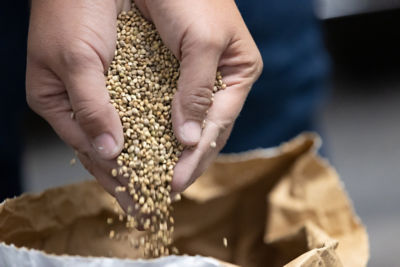Causal Agent
Tobacco etch virus (TEV)
Vector
Many species of aphids
Distribution
North and South America
Symptoms
The appearance and severity of symptoms may vary with the pepper variety infected, the isolate of virus present, age of the plant at the time of infection and environmental conditions. Plant and leaf symptoms include mottling, distortion and stunting. Unlike sweet peppers, infected hot pepper plants can develop severe wilting. Affected fruits may be distorted with chlorotic streaks or mosaic patterns. In the field, plants are usually infected by more than one virus. Multiple infections result in symptoms more severe and complex than those caused by TEV alone.
 Distortion of young leaves.
Distortion of young leaves.
Conditions for Development
Many weed species serve as alternate hosts for this virus. Like Tobacco etch virus, Cucumber mosaic virus and Pepper mottle virus, TEV is transmitted by aphids in a non-persistent manner as aphids move into pepper fields from nearby host plants (peppers, tomatoes, tobacco and weeds). Secondary spread occurs as aphids move from plant to plant. The virus may also be transmitted mechanically through activities such as staking, pruning or handling infected plants.
Control
Remove crop residues and weeds that can harbor the virus. In young plants, use reflective mulches to deter aphids and stylet oil and insecticide sprays to help reduce losses. However, controlling the aphid vector population with chemical treatments provides limited control. As plants increase in size, it is difficult to achieve complete insecticide coverage of leaves to effectively kill all aphids. Moreover, aphids can acquire and transmit the virus after very short feeding periods. Resistant varieties are commercially available in both hot and sweet peppers. However, commercial resistance is not effective against all isolates of this virus.




